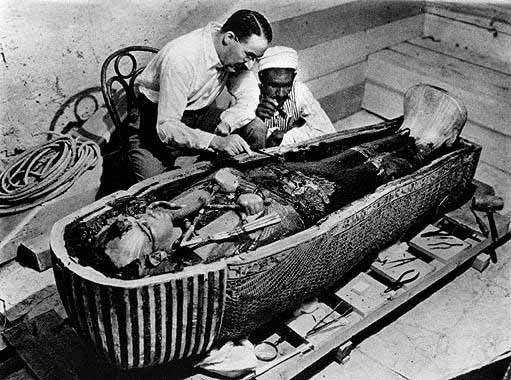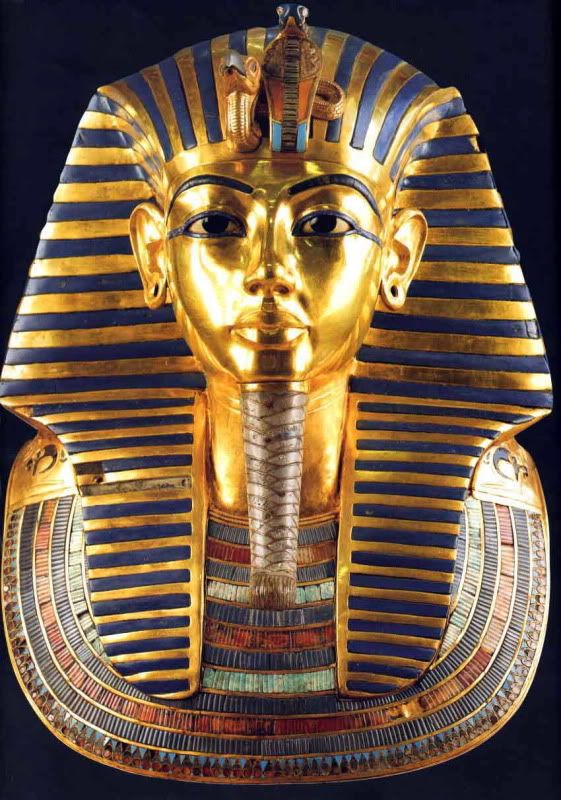Thankfully, the relics from the tomb of King Tutankhamun, today's most well-known pharaoh, are touring the United States in an exhibit, which is currently on display at the Science Museum of Minnesota. Tutankhamun ascended the Egyptian throne at the age of nine. Experts predict he died in his early 20s. He was buried in a tomb beneath his status, possibly due to an unexpected death. The location of the tomb was lost after the entrance had been damaged and subsequently built over. King Tut's tomb was discovered in 1922 by archaeologist and Egyptologist Howard Carter and George Herbert, 5th Earl of Carnarvon, the financer of the excavation. Carter began excavating sights in the Valley of the Kings in 1908. It was Carter's water carrier who found the steps leading to Tutankhamun's tomb.

Carter with Egyptian worker.
King Tut has inspired public interest since the tomb's discovery. Recently, scientific tests were conducted on Tutankhamun's mummy. In addition to concluding King Tut was a product of incest, scientists found signs of scoliosis, an overbite, and a slightly cleft palate. Scientists believe Tutankhamun's cause of death was due to a combination of a broken, infected leg and malaria.

No comments:
Post a Comment